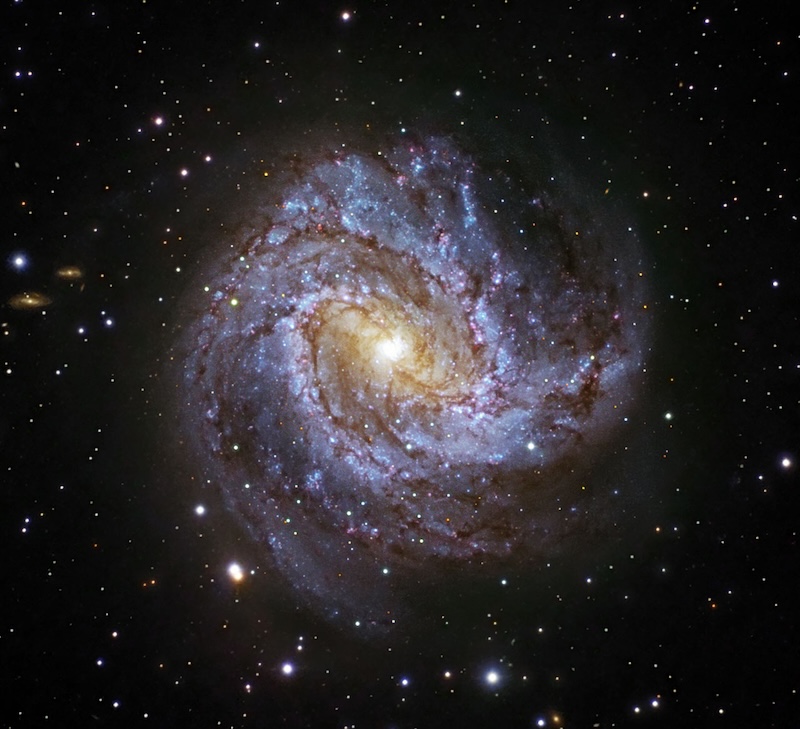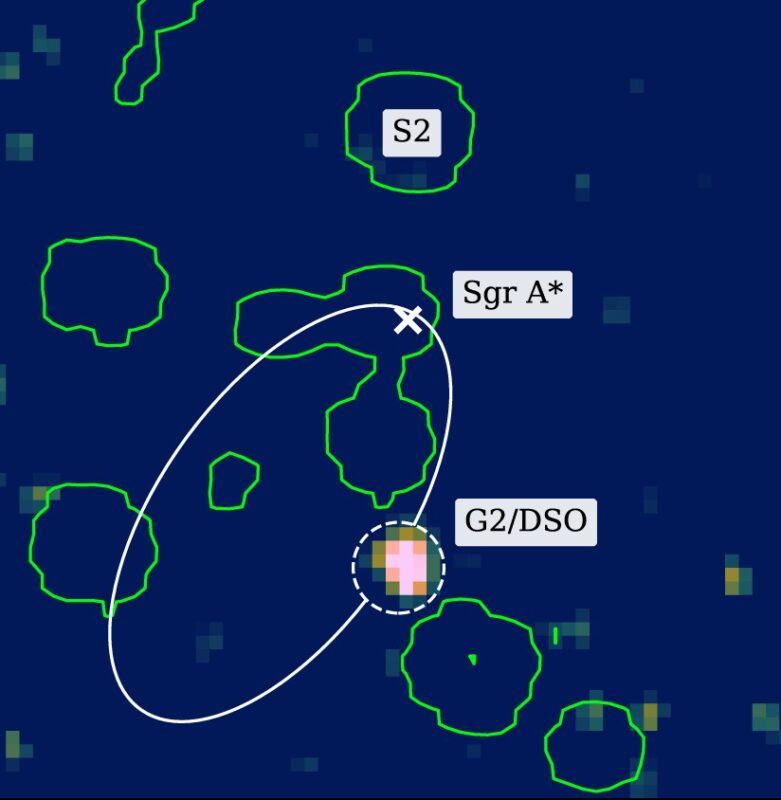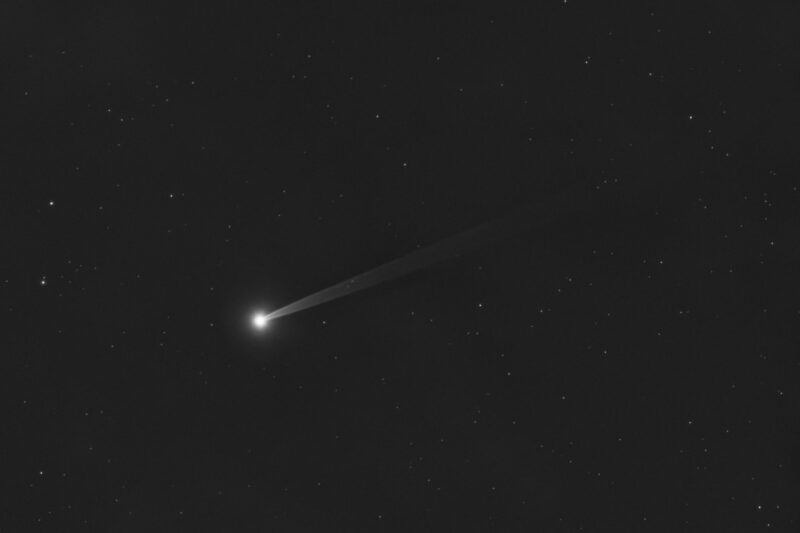Now Reading: New clues to how galaxies sustain star formation
-
01
New clues to how galaxies sustain star formation
New clues to how galaxies sustain star formation


- Scientists found high-velocity gas clouds in the galaxy Messier 83 that likely came from outside the galaxy.
- These clouds consist of dense molecular gas, the kind needed to form new stars.
- The findings suggest galaxies can sustain star formation by pulling in gas from their surroundings, including the intergalactic medium or nearby galaxies.
Why don’t galaxies run out of gas to make new stars?
Graduate student Maki Nagata of the University of Tokyo and colleagues were pondering an age-old question in astronomy: How do galaxies sustain star formation over billions of years? Stars form from gas clouds. And in our Milky Way galaxy, star formation should have stopped within a billion years after it formed, as its gas supply depleted. Yet star formation continues today. So there must be a process continually feeding gases to galaxies. On July 1, 2025, the astronomers said they found clues to this mystery in the galaxy Messier 83. They discovered high-velocity gas clouds moving faster compared to the galaxy’s overall rotation. And the scientists said these gas clouds likely originated from outside Messier 83.
Nagata said:
Gas clouds are a common feature of galaxies. Some are classed as high-velocity clouds and we suspected these might account for some of this galactic feeding material. What makes high-velocity clouds special is that their speed and direction don’t correspond to the general speed of rotation or the orientation of a typical spiral galaxy. This alone doesn’t necessarily mean they come from outside the host galaxy, though one scenario is that they start as material ejected by supernovas, or exploding stars. But we thought with the right analysis and reasoning, we could tell if at least some high-velocity clouds were from outside the galaxy.
The researchers published their findings in the peer-reviewed Astrophysical Journal on June 30, 2025.
Hunting for high-velocity clouds in Messier 83
Messier 83 is a barred spiral galaxy, 14.7 million light-years from us. In the sky, it lies at the border of the constellations Hydra and Centaurus. Its galactic disk faces us, giving a clear view of intricate spiral features.
The scientists observed Messier 83 using the Atacama Large Millimeter/submillimeter Array (ALMA), an array of radio telescopes in northern Chile. There, they mapped long wavelengths emitted by molecular clouds in the galaxy. In addition, they measured the velocity of the clouds.

Analyzing the radio telescope data
For their analysis, Nagata and her team defined high-velocity clouds as clouds moving at least 50 kilometers per second (112,000 mph) faster or slower than the rotation of the galactic disk. Plus, they focused on clouds moving perpendicular to the galactic plane.
Out of about 1,400 clouds, 10 clouds met the criteria for high-velocity clouds. Their sizes ranged from 196 to 522 light-years in diameter, with masses about 100,000 times that of our sun.
Next, the scientists ruled out other causes for those abnormal velocities. Perhaps a supernova, an exploded massive star, was driving the high velocities. Therefore, they compared the cloud locations with those of known supernova remnants. And they found that only one cloud coincided with a remnant.
For the remaining nine clouds, there were no known processes in the galaxy that could account for their aberrant velocities. Moreover, the energy in those clouds was higher than what the scientists expected from supernova ejecta. As a result, the researchers concluded that these clouds originated from outside the galaxy and were falling into it.

Galaxies are not isolated islands
The space between galaxies is not completely empty. The intergalactic medium has a low density of gases, on average about one atom in every 35 cubic feet (1 cubic meter). Some of those gases – hydrogen and helium – are remnants from the Big Bang. Other gases were swept out of galaxies by processes such as star formation, galaxy interactions and supermassive black holes.
In addition, many large galaxies have smaller satellite galaxies gravitationally bound to them. A larger galaxy could, during gravitational interactions, pull gases from a smaller satellite, providing gases to fuel new star formation.
Nagata observed:
Our results show that galaxies are not isolated but constantly interact with their surroundings. The discovery of high-velocity clouds falling into M83 suggests that galaxies can grow by accreting gas from the space around them, possibly from smaller neighboring galaxies or the intergalactic medium. While high-velocity clouds are typically low-density atomic hydrogen gas, something that surprised us in this study was that the clouds were found to be compact and made of dense molecular gas, exactly the type of gas that forms new stars. This suggests that the inflowing material may be directly connected to future star formation.
What Messier 83 teaches us about our own galaxy
Astronomers have seen high-velocity clouds in the Milky Way. But because we are inside our own galaxy, these unusual clouds are hard to characterize. That’s why looking at the full disk of another spiral galaxy, such as Messier 83, helps us better understand what could be going on in our home galaxy.
Nagata’s work has just begun. There is so much more to learn about high-velocity clouds. She said:
Our next steps include investigating how these molecular high-velocity clouds formed and whether they were once atomic gas, by examining their relationship to other gas structures such as neutral atomic hydrogen. We will also explore whether these inflowing clouds could trigger new star formation when they collide with the galaxy’s disk. This would finally help answer the outstanding question we asked ourselves before.
Bottom line: Scientists discovered high-velocity gases in Messier 83 that originate from outside the galaxy, perhaps explaining how galaxies sustain star formation over billions of years.
Source: High-velocity Molecular Clouds in M83
The post New clues to how galaxies sustain star formation first appeared on EarthSky.
Stay Informed With the Latest & Most Important News
Previous Post
Next Post
-
 012024 in Review: Highlights from NASA in Silicon Valley
012024 in Review: Highlights from NASA in Silicon Valley -
 02Panasonic Leica Summilux DG 15mm f/1.7 ASPH review
02Panasonic Leica Summilux DG 15mm f/1.7 ASPH review -
 03How New NASA, India Earth Satellite NISAR Will See Earth
03How New NASA, India Earth Satellite NISAR Will See Earth -
 04And Thus Begins A New Year For Life On Earth
04And Thus Begins A New Year For Life On Earth -
 05Astronomy Activation Ambassadors: A New Era
05Astronomy Activation Ambassadors: A New Era -
06SpaceX launch surge helps set new global launch record in 2024
-
 07From Polymerization-Enabled Folding and Assembly to Chemical Evolution: Key Processes for Emergence of Functional Polymers in the Origin of Life
07From Polymerization-Enabled Folding and Assembly to Chemical Evolution: Key Processes for Emergence of Functional Polymers in the Origin of Life




















